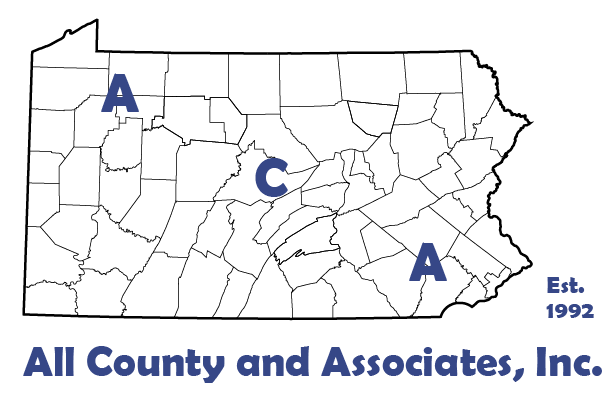
An on-site sewage system is an effective and efficient form of treatment for residential wastewater. In rural areas, it costs more to connect to a centralized treatment plant. This is because the houses are further apart and the terrain varies more. The use of on-site, decentralized, systems reduce the infrastructure costs for piping and pump stations. Though they are effective, they do need a large section of land for the absorption area.
The absorption area provides two vital components of the treatment process. First, soil removes nitrates and other chemicals from the effluent. Secondly, it infiltrates the liquid to the groundwater table. Thus, builders and homeowners need to protect the absorption area from compaction.
Soil Composition
Before we look at how compaction impacts the system, let’s look at the makeup of soil. Soil is a combination of soil particles, air, water and bacteria. The particles vary in shape and size based on the soil type. Sandy or gravelly soils have larger particles with larger pore spaces. Soils that are loam or clay, have smaller particles and less pore space. Retaining this void space, maintains two vital elements of the treatment process.
First, it retains space for oxygen. Compaction reduces the space between the soil particles. This reduction reduces oxygen for the bacteria process that breaks down the wastewater. Also, compaction reduces the amount of space for water to flow through. This reduces how much liquid the soil absorbs over time. Both these items lead to a reduction in the effectiveness of the absorption area. Ultimately, leading to a reduction in life-span.
Compaction Sources and Prevention
So, if compaction is the enemy, what do you have to be on the lookout for?
- Vehicular Traffic: During construction, trucks and equipment compact the exposed soil. Additionally, after construction, personal vehicles, motorcycles, all-terrain vehicles and snowmobiles can compact soil. Finally, it is important to note that compaction increases with wetter soils. So, it is important to not mow a saturated absorption area.
- Non-vehicular Traffic: The primary source is large animals, such as cows or horses. These animals have a large ratio between their weight and footprint. This creates higher pressure on the soil. This pressure results in compaction, especially when the soil is wet. Finally, the absorption areas are not a good location for play areas. These areas have high volumes of foot traffic and become compacted over time.
- Material Stockpiles: The last source to keep an eye out for would be material piles. During construction, this would be a fill or topsoil stockpile. Additionally, things like lumber, steel, etc. generate high levels of pressure on soil.
Now that we know what to be on the lookout for, how can you protect your absorption area? Absorption areas face the highest likelihood of compaction during construction. So, the best way is to erect a temporary fence with clear signage. This prevents vehicles, soil piles, and other materials from accessing the area. Next, is educating the current and future property owner. Thus, they know the location of the absorption area and importance of protecting it. Some homeowners may even prefer delineating and marking the area. Finally, avoid working or passing through the absorption area during saturated periods. To reduce the likelihood of saturation, divert upslope drainage around the absorption area.
Who is ACA?
Started in 1992 and located in Chester County, PA ACA has grown to become a full-service civil engineering firm. Today, we merge professional services with practical knowledge for residential and commercial projects. No matter the scale, from installing a fence, to building a structure or developing land, you need permits. Because the approval process includes many permits and agencies, it can be a headache. Working with ACA’s full-service team saves you time, money, and headaches. Every step of the way, we are here to support you and educate you about the process. Here are some of the basic services we provide:
Construction Management | Civil Engineering | Environmental Permitting | Septic System Testing and Design | Land Surveying | Wetland Delineations and Mitigation
Please feel free to browse our website or if working on a project or need help, contact us at (610) 469-3830.
Also, join the conversation on: Facebook | LinkedIn
